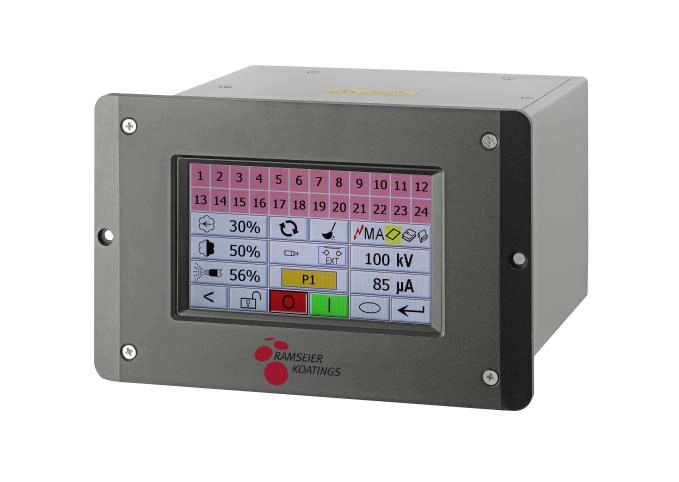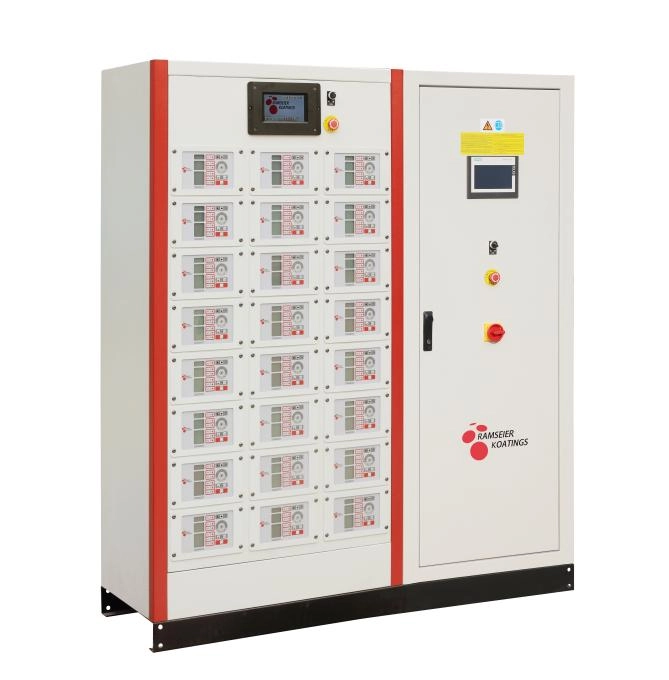Content Menu
● Understanding Traditional Control Systems in Powder Coating
>> Characteristics of Traditional Control Systems
>> Limitations of Traditional Control Systems
● What Is a Data Management System in Powder Coating?
>> Core Features of Data Management Systems
● Comparing the Two Systems: Key Factors
● Benefits of Data Management Systems for Powder Coating Lines
>> Enhanced Productivity and Throughput
>> Improved Inventory and Waste Management
>> Superior Quality Control and Compliance
>> Real-Time Process Visibility and Issue Resolution
>> Data-Driven Continuous Improvement
● Challenges of Implementing Data Management Systems
>> Upfront Investment and Training
>> Integration Complexity
>> Data Security and Reliability
● When to Choose Traditional Control Systems
● When to Opt for Data Management Systems
● Case Study: Boosting Efficiency with ERP-Integrated Data Management
● Conclusion
● Frequently Asked Questions
Powder coating lines are critical components in modern manufacturing, providing durable, high-quality finishes for a wide range of products. As technology advances, manufacturers face a pivotal choice between relying on traditional control systems or adopting modern data management systems to optimize their powder coating operations. This article explores the differences, advantages, and challenges of each approach to help you decide which system best suits your powder coating line.

Understanding Traditional Control Systems in Powder Coating
Traditional control systems in powder coating lines typically involve manual or semi-automated controls that regulate machinery, line speed, and powder application parameters. These systems often rely on fixed settings and operator intervention to maintain quality and throughput.
Characteristics of Traditional Control Systems
- Manual or Semi-Automated Operation: Operators adjust settings such as spray gun parameters, conveyor speed, and curing times based on experience and visual inspection.
- Limited Data Collection: Data recording is often done manually or via simple counters and gauges, with minimal real-time feedback.
- Basic Process Control: Controls focus on individual machine components rather than integrated line-wide coordination.
- Lower Initial Cost: Traditional systems generally require less upfront investment compared to advanced digital systems.
Limitations of Traditional Control Systems
- Inconsistent Quality: Manual adjustments can lead to variability in coating thickness and finish quality.
- Inefficient Resource Use: Lack of precise tracking can cause overuse of powder or energy.
- Limited Visibility: Managers have minimal real-time insight into production status or bottlenecks.
- Slow Response to Issues: Problems may only be detected after defects appear, leading to rework or scrap.
What Is a Data Management System in Powder Coating?
A data management system (DMS) integrates sensors, software, and control hardware to collect, analyze, and optimize data throughout the powder coating process. These systems often form part of a broader Enterprise Resource Planning (ERP) or Manufacturing Execution System (MES) tailored for surface finishing industries.
Core Features of Data Management Systems
- Real-Time Data Tracking: Continuous monitoring of powder usage, line speed, curing temperatures, and job progress.
- Automated Scheduling and Inventory Control: Dynamic adjustment of production schedules and raw material orders based on actual demand and consumption.
- Quality Control Automation: Automated inspection data collection and compliance tracking.
- Process Optimization: Analytics-driven recommendations to reduce waste and improve throughput.
- Integration Capabilities: Seamless connection with other manufacturing systems for end-to-end visibility.
Comparing the Two Systems: Key Factors
| Factor | Traditional Control Systems | Data Management Systems |
| Cost | Lower initial investment; higher labor costs | Higher upfront cost; potential long-term savings |
| Quality Control | Manual inspection; variable consistency | Automated, consistent quality assurance |
| Resource Efficiency | Prone to powder waste and energy inefficiency | Optimized powder usage and energy consumption |
| Production Visibility | Limited real-time data; reactive problem-solving | Real-time monitoring and proactive management |
| Scalability | Less adaptable to high volume or complex lines | Easily scalable and customizable |
| Operator Dependence | High reliance on skilled operators | Reduced operator intervention; more automation |
Benefits of Data Management Systems for Powder Coating Lines
Enhanced Productivity and Throughput
Data management systems enable manufacturers to create dynamic production schedules that align with customer orders, machine availability, and workforce capacity. This synchronization reduces downtime and ensures smooth workflow from pre-treatment to curing, increasing overall throughput.
Improved Inventory and Waste Management
By tracking powder and chemical usage in real time, these systems prevent over-ordering and minimize material waste. Automated inventory forecasting and reordering maintain optimal stock levels, reducing excess inventory costs.
Superior Quality Control and Compliance
Automated data collection ensures that quality control procedures are consistently followed, with inspection data logged for regulatory compliance. This reduces the risk of defects and improves customer satisfaction.
Real-Time Process Visibility and Issue Resolution
Managers can monitor job progress, machine performance, and material consumption across the entire line. Instant alerts enable quick responses to bottlenecks or equipment malfunctions before they impact deadlines or quality.
Data-Driven Continuous Improvement
Detailed analytics provide insights into production trends, resource utilization, and waste patterns. Manufacturers can leverage this data to implement process improvements, leading to long-term cost savings and sustainability gains.
Challenges of Implementing Data Management Systems
Upfront Investment and Training
The initial cost of installing a data management system can be significant, including hardware, software, and integration expenses. Additionally, staff training is essential to ensure effective use of the new technology.
Integration Complexity
Integrating a data management system with existing machinery and ERP platforms requires careful planning and may involve customization to fit specific production needs.
Data Security and Reliability
As with any digital system, data security and system reliability must be managed to prevent downtime and protect sensitive production information.
When to Choose Traditional Control Systems
Traditional control systems may be preferable in scenarios such as:
- Small-scale operations with low production volumes.
- Simple powder coating tasks with consistent part sizes and shapes.
- Limited budgets where upfront investment in automation is not feasible.
- Facilities with highly skilled operators who can maintain quality manually.
When to Opt for Data Management Systems
Data management systems are ideal when:
- High throughput and consistent quality are critical.
- The production process involves complex scheduling and multiple product variants.
- Reducing waste and improving sustainability are priorities.
- Real-time visibility and data-driven decision-making are desired.
- Integration with broader manufacturing systems is planned.
Case Study: Boosting Efficiency with ERP-Integrated Data Management
A powder coating manufacturer implemented an ERP system tailored for surface finishing that included real-time inventory tracking, automated scheduling, and quality control modules. The result was a substantial reduction in powder waste, improved on-time delivery rates, and enhanced product quality. The system's analytics helped identify bottlenecks and optimize machine usage, leading to increased profitability and customer satisfaction.
Conclusion
Choosing between a traditional control system and a data management system for your powder coating line depends on your operational scale, quality requirements, budget, and long-term goals. While traditional systems offer simplicity and lower initial costs, data management systems provide comprehensive control, efficiency, and insights that drive superior performance and sustainability. For manufacturers aiming to stay competitive in a demanding market, investing in a data management system integrated with ERP solutions is increasingly becoming the better choice.
Frequently Asked Questions
1. What is the main difference between traditional control systems and data management systems in powder coating?
Traditional systems rely on manual or semi-automated controls with limited data collection, while data management systems use real-time data tracking and automation to optimize the entire process.
2. How do data management systems help reduce powder waste?
They track powder usage precisely, forecast inventory needs, and provide analytics to optimize application techniques, minimizing overuse and material waste.
3. Are data management systems suitable for small powder coating operations?
They can be, but the higher upfront cost and complexity may not be justified for very small or simple operations where manual control suffices.
4. Can data management systems integrate with existing manufacturing software?
Yes, modern data management systems are designed to integrate with ERP and MES platforms for seamless production management.
5. What are the key benefits of real-time process visibility?
It allows managers to monitor production status, detect issues early, optimize machine usage, and improve scheduling, leading to higher efficiency and product quality.

[1] https://proplate.pro/how-powder-coating-manufacturers-can-boost-erp-efficiency/
[2] https://zh-style-guide.readthedocs.io/_/downloads/zh-cn/latest/pdf/
[3] https://rwconveyor.com/manual-vs-automated-whats-the-best-powder-coating-line-for-you/
[4] http://www.tup.tsinghua.edu.cn/upload/books/yz/085177-01.pdf
[5] https://p2infohouse.org/ref/39/38696.pdf
[6] https://developer.mozilla.org/zh-CN/docs/MDN/Writing_guidelines/Writing_style_guide
[7] https://www.wagner-group.com/us/industry/products/powder-coating/complete-systems/
[8] https://home.liebertpub.com/media/pdf/Chinese-Research-Article-Writing-Guide.pdf
Hot Tags: China, Global, OEM, private label, manufacturers, factory, suppliers, manufacturing company










































 .
. 